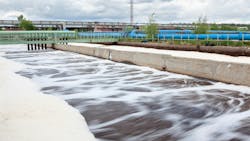Researchers propose new approach to generate free nitrous acid
A research paper proposes a new approach to generating free nitrous acid (FNA) using acid-tolerant ammonia oxidizers, according to a press release from Higher Education Press.
FNA has been widely applied in urban wastewater management, including sewer networks, wastewater treatment processes and sludge treatment processes. However, these applications are associated with great costs to produce FNA at the required levels, leaving many enterprises can’t bear the heavy load.
Now, researchers propose a new approach to facilitating in situ FNA generation with acid-tolerant ammonia oxidizers. The paper was published in Frontiers of Environmental Science & Engineering.
Researchers make a lot of efforts to reduce negative impacts of FNA on wastewater treatment, improve the efficiency of FNA treatment, increase FNA production and lower the cost. Yet, challenges like high-strength wastewater are unavailable for many wastewater treatment facilities demand solutions.
The latest research highlights the benefits of in situ FNA generation using these acid-tolerant ammonia oxidizers.
“The acid-tolerant AOB offers the possibility of achieving in situ FNA accumulation through operating sewage and sludge treatment units in acidic operations,” said Zhiqiang Zuo, lead author of the study. “First, it allows for the achievement of FNA concentrations at ppm levels even in low-strength municipal wastewater. Second, compared to the periodic treatment of biomass with FNA generated ex situ, the high in situ FNA concentration ensures the continuous exposure of the entire system to the harsh conditions, theoretically maximizing the benefits.”
Researchers also highlight the multiple benefits of the technique for wastewater management from the perspective of robust nitridation in mainstream treatment of domestic wastewater, acidic sludge treatment for reduction, stabilization and toxic metal removal.
“We propose broader possibilities through the utilization of acid-tolerant AOB to enhance wastewater management,” said Zuo.
The FNA produced in situ could simultaneously remove micropollutants. In addition, FNA-induced cell lysis could support pathogen inactivation. Using acid-tolerant AOB, a high FNA level could be generated, which is expected to mitigate membrane fouling. Furthermore, the utilization of acid-tolerant AOB led to FNA being self-sustained and optimizing algae-based wastewater treatment.
